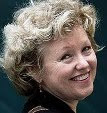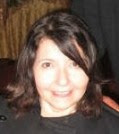Sunday, October 30, 2011
On the road with Annie Nakamura
Part I of a series
“Can I ask you to do me a big favor,” Annie queried. It was a simple opening question. “Anything for you, Annie,” was my response. What followed was anything but an ordinary favor. Annie’s request: “To be taken on one more road trip” following her death. Annie had made the request years earlier when my husband, Don and I, were visiting her in Hilo, Hawaii. We, of course, consented on the spot. But when the second request came in January 2010, Annie was in the hospital and not expected to live beyond the week. Having been resuscitated, Annie was weak but in her usual remarkable good spirits.
Annie not only survived the week, but was also released. Upon her return home, she began the task of “sorting out” her life so that her family would be spared the responsibility for doing so following her death. And sort, Annie did. In typically Annie fashion, she went through all of the correspondence she had saved in the course of her life; plowed through her wardrobe to donate clothes; went through every nook and cranny to do a “clean sweep”; made funeral arrangements; and put everything in order. She wrote a postcard recalling many of places I had sent her postcards from, with the entreaty to “keep those postcards coming” so that she could be on a road trip vicariously.
Annie and I met when her first cousin, Yvonne, married my brother, Fred in 1982. Both of us were in the wedding party, and that began a life-long friendship based upon food, chocolate, travel, postcards, food, chocolate, fun, food, and chocolate. She and her best friend, Ann (aka Kawa), took “road trips,” and they began the tradition of sending postcards from the various places they visited. I joined the “postcard club.”
Annie and Ann roomed together in San Francisco, and whenever we visited, we would stay with the “Annies” and eat, eat, eat. Being “chocoholics,” we would always include some sort of chocolate venture during our eating fests; there were nightly dessert runs as well. Kawa was a wiz on public transportation, and our quest for food involved trips on trolleys, subways, buses, and lots of walking. Fun, food, and chocolate were plentiful.
From January to July 2010, whenever I called Annie, she was always upbeat and would reconfirm that Don and I were still on-board for the final road trip. She even managed to send a few postcards from her “cache” of left-over postcards from previous trips. I reassured her that we were not only willing to do the road trip but were also honored that she would make the request of us.
Kawa called us with the sad news that Annie died in July 2010, just weeks prior to her 60th birthday. Per her arrangements, she was cremated, and her remains stored in a “biodegradable urn” (so Annie!) At what was a moving final memorial services, the church Annie had attended and had been so active was packed with members saying their farewells. Kawa was in attendance.
Two weeks after Annie’s death, a priority mail package in Annie’s handwriting arrived at our door. Don and I were stunned to see the familiar handwriting but even more so to find a letter accompanying two Koa wooden boxes—one Don had made for Annie years following our visit; one was purchased by Annie to store her “Las Vegas” cash. Annie wanted to return the Koa jewelry box because it had meant so much to her, and she wanted to return it because, she “could not take it with her” and she wanted it to bring us “as much pleasure” as it had her. We still cannot read the letter without crying.
As we planned the trip, Kawa, Don, and I were taking and making some decisions as to the places we would scatter her ashes, Kawa sent us a letter that left us all stunned. Annie had taken a life insurance policy to “pay for the road trip.” True to end, Annie did not wish to be a burden on any of us; consequently, the insurance policy was to pay for expenses. She did not want us to have the “$1.99” as-you-go Nakamura tours she was known to have but, instead, to have one where we would stay at nice hotels and eat great meals in her honor. Annie loved eating so much so, that one of our favorite “Annie-ism” is “If I couldn’t eat, I would DIE!” We still laugh at that saying that rivals Yogi Berry.
The ashes were left with the family for a year; on the anniversary of her death, Kawa contacted me about planning the road trip. The plan was that Ann would come out in October for a 12-day journey. Joining us would be Janet, from Honolulu, who worked with Annie years ago and who had experienced a “Annie road trip” in the past. Yet another surprise was to come. While Annie’s brother was going through more papers, he came across a letter to Kawa about where Annie wished her ashes to be placed. Kawa, Don, and I had intended to scatter her in numerous places where Annie had visited and in a few places that Annie had told Kawa where she wanted to be buried and/or scattered. This letter was one that stated that she wanted to be buried on Hurricane Ridge in the Olympic National Forest, Washington OR in the Anza Borrego Desert (as a back-up). Once again, in death as in life, Annie did not want to inconvenience anyone. Since Don and I live in San Diego, the Anza Borrego location would have been easier if we were on any time constraint. Annie, Annie, Annie! Is there anything she did not think of?
Annie arrived priority mail on Monday, October 4, 2011. Nestled in the middle of the box was a beautiful red gourd wrapped in a brightly patterned cloth bag. Her “biodegradable” urn was the red colored gourd. Once again, Annie thought of everything.
On Thursday, October 7th, Ann arrived from Baltimore; Janet joined the group on Friday, October 8th; with Don at the helm, all took off bright and early on Saturday, October 9th in our rented Nissan Altima. After a round of picture-taking to document the journey, Annie was nestled comfortably in the console cupholders. The journey began.
-To be continued-
Judith Liu
October 30, 2011
Sunday, October 23, 2011
Taking the Plunge: Self-Publishing
Last week's story in the New York Times about Amazon's decision to enter the arena of publishing with a number of books in several genres sent the publishing field into a state of heightened anxiety. As for me, it had the opposite effect. I've been hovering on the edge of a decision to self-publish my latest book, and every time I thought about it I began to tremble. But when I read author Laurel Saville's story in the NYT article, my anxiety abated and I felt a great weight lift from my shoulders.
Like me, Laurel was an experienced writer with a memoir she'd been shopping around to agents and publishers with little luck. As the New York Times reported, with New York publishers as the gatekeepers, she'd been "locked out of the game." Not that they thought her book was unworthy. Quite the contrary. "I got lots of praise," she was quoted as saying, "but no takers." I've had exactly the same experience with this latest book, Diving for Pearls: A Thinking Journey with Hannah Arendt, also a memoir.
My book cuts across genres, blending scholarly commentary with personal narrative. It tells the story of how studying one woman's ideas (Hannah Arendt's) about what makes ordinary people behave badly unexpectedly launched me on a "thinking journey" past islands of uncertainty about decisions in my own life toward the shores of responsibility and forgiveness. I try to bring complicated concepts in political theory down to earth and make these ideas meaningful for thinking about difficult decisions we make every day in our lives.
I've sent the book around to loads of agents and gotten lots of praise for the concept and the writing. But no takers. What to do? I decided to write to Laurel Saville for advice.
She'd been lucky. She'd published her book with iUniverse and then spent a little money to be listed among self-published authors on Publisher's Weekly, a major source of information for authors and all those connected to the publishing industry. Then someone wrote a review of her book and it caught the attention of Amazon. The rest, as they say, is history. I didn't expect to have the same experience as she, but I wanted to hear more about her experience and see what she recommended. So I told her a little about my book and my experience. "I'm standing on the edge of the self-publishing pool," I wrote in an email, "about to plunge."
"Do it," she wrote back almost immediately. "Now there are many more avenues than when I came out with my book. There's CreateSpace and other modes that give you lots of distribution options. Just make sure you watch the whole process of production like a hawk. And hire a publicist. I found one who gave me great coverage for not a lot of money."
I thanked her for providing further support for my decision and started researching self-publishing options, along with publicists, including Laurel's own recommendation, Ann-Marie Nieves, who operates GetRed PR in New York.
So far, I'm leaning toward CreateSpace for production. And since I was heading to New York for a conference, I made an appointment with Ann-Marie Nieves of GetRed to begin to think forward toward marketing and publicizing my book.
I've mapped out a calendar for the upcoming months: finish final edits on the manuscript by January, find a cover designer--I have loads of graphic design contacts--upload my manuscript, and start the media and networking (including social media) blitz to get the word out about my new book.
Looks like I didn't have to wait for New Year's this year to be resolved!
Monday, October 17, 2011
The Topic Writers Love to Hate: The Latest Trends in Book Marketing
DIVINA INFUSINO is the author of Day Trips From Orange County, an often personalized account of Southern California’s iconic and idiosyncratic locales, natural and cultural sites, hotels, day spas, shopping areas and restaurants. She is also a co-author of The Love Response and Rock Gods. She has developed and consulted on numerous books over the past eight years, including those by bestselling self-help author Debbie Ford and wellness author Dr. Ellen Cutler. Divina has worked as a staff entertainment writer for The Milwaukee Journal and The San Diego Union, was a cultural commentator for KPBS Radio, and has also been published in Rolling Stone, The Economist, TV Guide, Entertainment Weekly, The Los Angeles Times, Reuters,The New York Times Syndicate, Harper’s Bazaar, Salon.com, and HuffingtonPost.com. Among her celebrity interview subjects are Madonna, Julia Roberts, Bono, Bob Dylan, George Harrison, Deepak Chopra, Robert Redford, Tom Hanks, Kate Bosworth, Stephen Covey, Norman Mailer, Bishop Desmond Tutu, and Keith Richards. She earned her bachelor’s in English and Communications from Marquette University and a master’s in mass media analysis from the University of Wisconsin.
Friday, October 7, 2011
Snugglepot and Cuddlepie: Headliners of the Roaring 20s

By Georgeanne Irvine
Research, research, and more research is fun, fun, and more fun for me whenever I’m writing an article or a book! Over the past month I’ve had an absolute blast researching the saga of Snugglepot and Cuddlepie—the San Diego Zoo’s first-ever koalas—who arrived from Australia in 1925. I'm including their tale in a colorful, high-end brochure that will help the Zoo raise money for a splendid new koala exhibit.
Snugglepot and Cuddlepie also have the distinction of being the first koalas to live in a zoo outside Australia, which was big news back in the 1920s. I was thrilled to discover that our Zoo library has newspaper clipping books dating back to 1916 when the Zoo was founded, and that they contain a wealth of stories about the expedition that brought these precious marsupial superstars to San Diego.
The adventure itself was filled with drama and intrigue. I can only imagine what it must have been like for Zoo director Tom Faulconer to travel across the Pacific Ocean by steamship in December 1924 with 200 North and Central American animals onboard. He was the sole Zoo employee on the trip, responsible for everything from travel logistics to feeding the animals and cleaning their crates! In January 1925, he returned to San Diego with 200 unusual Aussie critters in tow. All aspects of the tale mesmerized me: major storms, seasick animals, an alligator escapee on deck with the passengers, a king cobra in Faulconer’s stateroom, the koalas nearly missing the ship to the U.S., and many more escapades.
I was also fascinated by the writing style featured in the old newspaper clippings. The choice of words and phrases enchanted and sometimes amused me. By today’s standards some words have taken on different meanings, others might be considered old-fashioned, and a few would be deemed inappropriate. Below are some of my favorite headlines and passages, which include the original grammar and punctuation. Enjoy your journey back in literary time!
A KOALA IS…
Dec. 21, 1924 (The San Diego Union)
A droll little fellow, abnormal in many ways, he is the original Teddy Bear. His little, podgy, tailless body, short thickset head and round, tufted ears lead some countenance perhaps to the ursine analogy, but there the likeness ends. When irritated or disturbed they utter a cry described as a hoarse groan. Young Koalas make delightful household pets. They are naturally docile and quickly become attached to their owners, following them about the premises.
Feb. 6, 1925 (Philadelphia Inquirer, photo caption)
“Teddy Bear” Models: Two little Koala bears from Australia, which have been brought all the way from the Antipodes to the San Diego, Calif. Zoo, where they are the friendliest of all the inmates.
Sept. 29, 1925 (The San Diego Union)
He can climb anything, and when attacked, if unable to save himself by climbing he will lie on his back and swing his mean claws. But the koala is very affectionate and is fond of petting parties, never offering to attack a human being.
August 1943 (ZOONOOZ article about the 1925 expedition)
The little grey chap weighs only four or five pounds as a rule, and most of that is wool. He has a shoe-button black nose and glassy eyes that look like big marbles. Being nocturnal by nature, his daylight hours are spent in such moveless quiet that one might easily mistake him for a doll, and no child or woman can resist the temptation to cuddle him.
KOALAS IN THE NEWS
Dec. 21, 1924 (The San Diego Union)
Zoo To Have Koala Bears: Interesting Description of These Little Known Animals
Since the word got around the Director Tom Faulconer of the zoo had gone to Australia to bring back Koala bears among other specimans, and that the zoo was going to undertake the propagation of them, the telephone at the Zoological garden office has been ringing constantly. A surprisingly large number of people are interested in various ways regarding the proposed undertaking, and the situation has at times taken a humorous turn. This was especially true when a prudish little old soul, fearful of the savagery of the beast, insisted that the zoo abandon the idea before lives were lost.
Jan. 24, 1925 (Honolulu Star-Bulletin)
Steamer Carries Cargo of Queer Animal Life
…”Bill” King, a passenger specialist for the local offices of the Oceanic line, had an unexplained leeriness in his eye as he climbed up her Jacob’s ladder yesterday morning. He had had advance information about the queer passengers aboard her, but had taken no one into his confidence. He looked gingerly up and down the companion-ways before entering. He shied from coils of rope. When one considers that there was a 30-foot hamadryad cobra aboard and ten smaller ones of the same tribe, recently brought from India to Australia as particular pets for Faulconer, it is not to be wondered at.
Jan. 27, 1925 (San Diego Sun)
Weird Animals Due for San Diego Zoo: Tom Faulconer Returns From Australia With Queer Collection of Birds and Animals
With enough kangaroos to hold “kangaroo court” every day in the month and enough weird birds and snakes to furnish scenery for a Dantesque picture of Delirium Tremens, Tom Faulconer, director of San Diego’s famous zoo, is on his way from San Francisco to make the Balboa park institution rank second among the zoological gardens in the United States.
On his arrival in Australia, he made the old stories of horse traders pale into insignificance. Swapping a rattlesnake for a wombat, a wildcat for an egg-laying echidna, and so on down the line, would unfold a tale of barter that might have been entitled “What Made the Wildcat Wild.”
As a result, the San Diego zoo will be enriched by some 28 kangaroos, to say nothing of an assortment of bandicoots, dingoes, phalangers, wallabies and whatnot. What may all these things be? Search us!
Jan. 28 1925 (San Diego Sun)
Weird Guests of Local Zoo Arrive Today
If you heard loud, weird noises emanating from the foot of Broadway about 1 o’clock today, don’t be alarmed. It was neither some new murder being perpetrated, nor was it a band of Cocopah Indians on the war path—it was merely 100 birds, together with a miscellaneous assortment of animals and reptiles completing their long journey from Australia.
Jan. 28, 1925 (San Diego newspaper—clipping didn’t include publication name)
Zoo Folk Sick for Haunts in Australia
Waves of homesickness are passing over the San Diego zoo in Balboa park today where the new visitors brought here yesterday by T.N. Faulconer, director, from Australia, are striving to become acquainted with their new surroundings. On the other hand, many of San Diego’s wild animals are somewhere in Australia longing for their Cuyamaca mountain trails and their comfortable homes in Mission Valley.
San Diego native Georgeanne Irvine has devoted more than three decades of her career to raising awareness about animals and wildlife conservation. By day, she is associate director of development communications for the San Diego Zoo, where she has worked for 33 years. George is also the author of more than 20 children’s books plus numerous magazine, newspaper, and Web articles. George’s most recent work is the coffee table book, The Katrina Dolphins: One-Way Ticket to Paradise, which is a true story about 8 dolphins from an oceanarium that were washed out to sea during Hurricane Katrina in 2005 and dramatically rescued a few weeks later.












